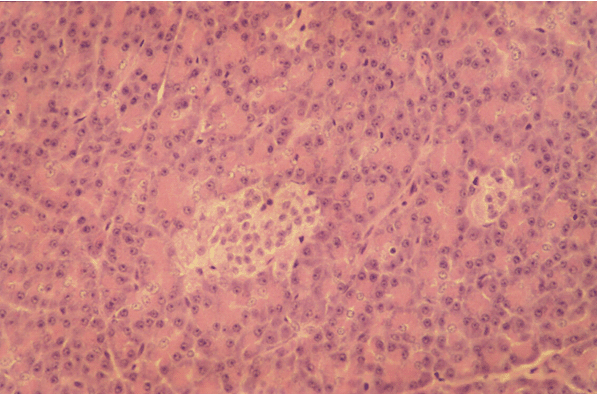AB1.H1.6 +D1 The Pancreas
The Pancreas:
- The pancreas lies within the concavity of the "C" - shaped duodenum (the head of the pancreas) and extends towards the hilus of the spleen (the tail of the pancreas)
- The pancreas is both an exocrine gland and an endocrine gland
- The exocrine portion of the pancreas forms the bulk of the gland and gives it its overall morphology
- There is a thin connective tissue covering of the glands with septae which divide the gland into lobules
- There is a central large duct which drains into the duodenum (there may also be an accessory duct which runs in parallel with the main duct)
- Divisions of this duct drain lobules of secretory acini
- The secretory acini are composed of cells rich in rough endoplasmic reticulum which is located at the basal side of the cell
- There are numerous storage granules in the apical cytoplasm
- The granules contain a range of digestive enzymes
- The endocrine component of the cytoplasm consists of small clusters, or islets, of cells scattered throughout the pancreas
- These are known as Islets of Langerhans
- There is a greater density of islets in the tail of the pancreas than in the head
- The islets have a rich capillary network and in common with other endocrine glands the capillaries are of the fenestrated type
- The hormones secreted by the Islets of Langerhans include insulin and glucagon
Questions:
Micrograph of Gall Bladder:
- This micrograph shows an area of pancreas containing numerous secretory cells
- Most of the cells shown form part of the exocrine pancreas
- However, notice that in the middle of the micrograph there is a small, more palely stained cluster of cells
- This cluster of cells is an Islet of Langerhans, part of the endocrine portion of the pancreas

